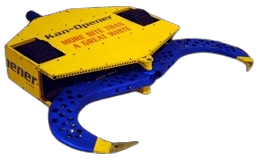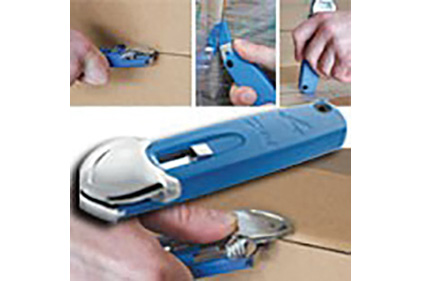
- S7 can opener update#
- S7 can opener software#
- S7 can opener code#
- S7 can opener password#
- S7 can opener download#
There are three available Copy Protection settings: Copy Protection is a useful setting that can be used to lock, or bind, a program to a specific PLC or memory card. If you've played with Know-how Protection, you've probably already seen the Copy Protection settings under the block's protection properties. Like Know-how Protection, Copy Protection is also a block property. Copy Protectionįinally, we get to Copy Protection. It can, however, be useful for discouraging unauthorized changes or managing libraries of function blocks for use within a large project or even within an organization. It's important to mention that Know-how protection is not bullet-proof: there are ways to get around it, so it shouldn't be the first and last defense for protecting valuable information.
S7 can opener password#
When you attempt to open any locked block, you will now be prompted for a password in order to see the block's source.

Once Know-how Protection has been applied to a block, you will notice that the block is immediately recompliled, and a lock ison will appear within the project tree to indicate the block is locked.

"Know-how Protection" can be enabled for multiple blocks at once. But, it is possible to select multiple (or all!) blocks within the project tree and apply Know-how Protection to all of the blocks at once.
S7 can opener code#
Applying it to one block will not prevent someone from viewing the source code of another block used within it. It should be noted that this property is not recursively applied - that is, if an OB is Know-how Protected, any FBs of FCs used within that OB will not automatically have the same protection applied. Choose 'Define' to assign a password for the block. "Know-how Protection" can be accessed under the block's properties. You can enable Know-how Protection either by right clicking on a block in the project tree and selecting "Know-how Protection," or by looking at the block's properties and selecting "Protection." When enabled, a user will be unable to view or modify the actual code or tags within a block without first entering the password. Know-how protection is a block-level property that can be set for any OB, FB, FC, or DB. With "Write/Read Protection" enabled, it is not possible to upload a program from a PLC without the password. Read protection will prevent a user from uploading code, monitoring tags, or even seeing which blocks are present on a CPU. "Write/Read Protection" - This setting, when enabled, will offer the same security that is provided while using "Write Protection" with the additional benefit of disabling read access without the password. With "Write Protection" enabled, it is necessary to first enter the password before tag values may be forced or modified.
S7 can opener download#
With Write Protection enabled, a password is required to download to the PLC.
S7 can opener update#
However, if a user wishes to download an update to the code on the PLC, download a new program, or edit/force tag value while online, a password will be required. A user may connect to the PLC and upload a program or connect and go online with the PLC and monitor tag values with no need for a password. "Write Protection" - Selecting this option will prevent an unauthorized user from writing to the PLC. With this setting, any user may connect to the PLC, read/write data, or upload/download a program to/from the PLC without any need for a password. "No Protection" - This option is the standard and default behavior. There are three options for Write/Read Protection you can choose from: This is done by opening a device in Device View, choosing the "Properties" tab, and looking for "Protection" under the "General" tab. Write/Read Protection is a CPU property: it can be assigned by viewing the properties of a device. TIA Portal contains three different options for code protection: As I have a 1214C PLC sitting here on my lab bench, I'm going to use the S7-1200 platform as an example however, these options could be enabled on other PLCs (such as the 1500 series) as well. Luckily, there are tools available within TIA Portal for all of these cases, and it doesn't take more than a few minutes to set them up.

S7 can opener software#
These machines may run unique software and by using the wrong code (or release) could cause risk to an operator or the machine itself. There may also be cases where it is necessary to interlock a PLC program to a specific memory card or CPU, especially in cases where there may be multiple, similar (but slightly different) machines. In others, its purpose may be to prevent unauthorized modifications to safety-related code, or activation of disabled options. In some cases, there may be valuable intellectual property they would like to protect. From time to time, we'll run across situations where a client believes it is necessary to lock down code on a PLC.


 0 kommentar(er)
0 kommentar(er)
